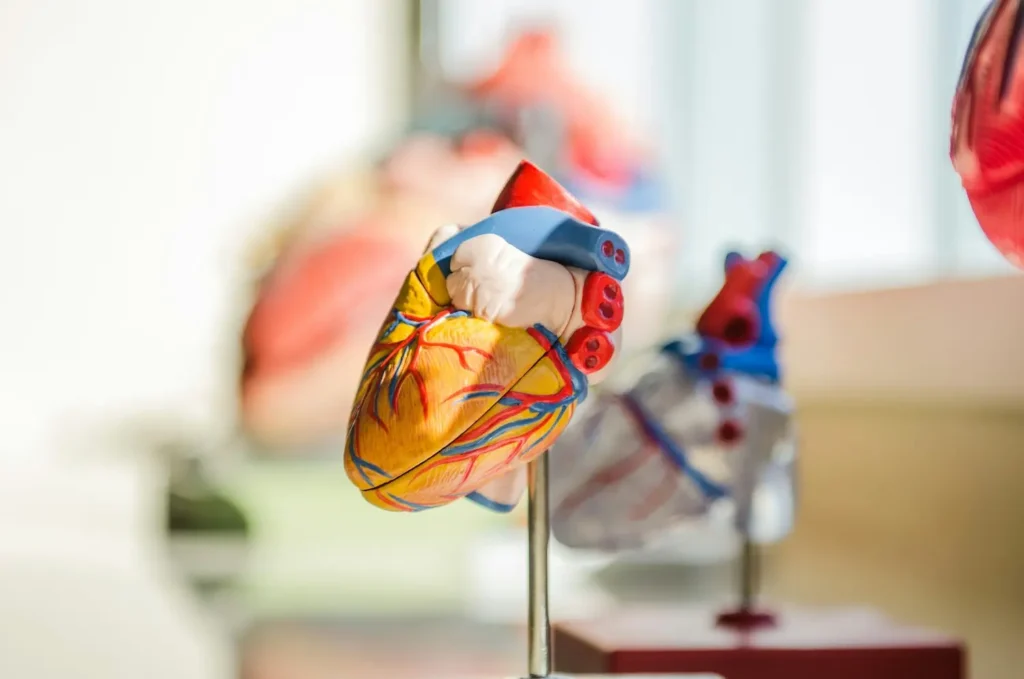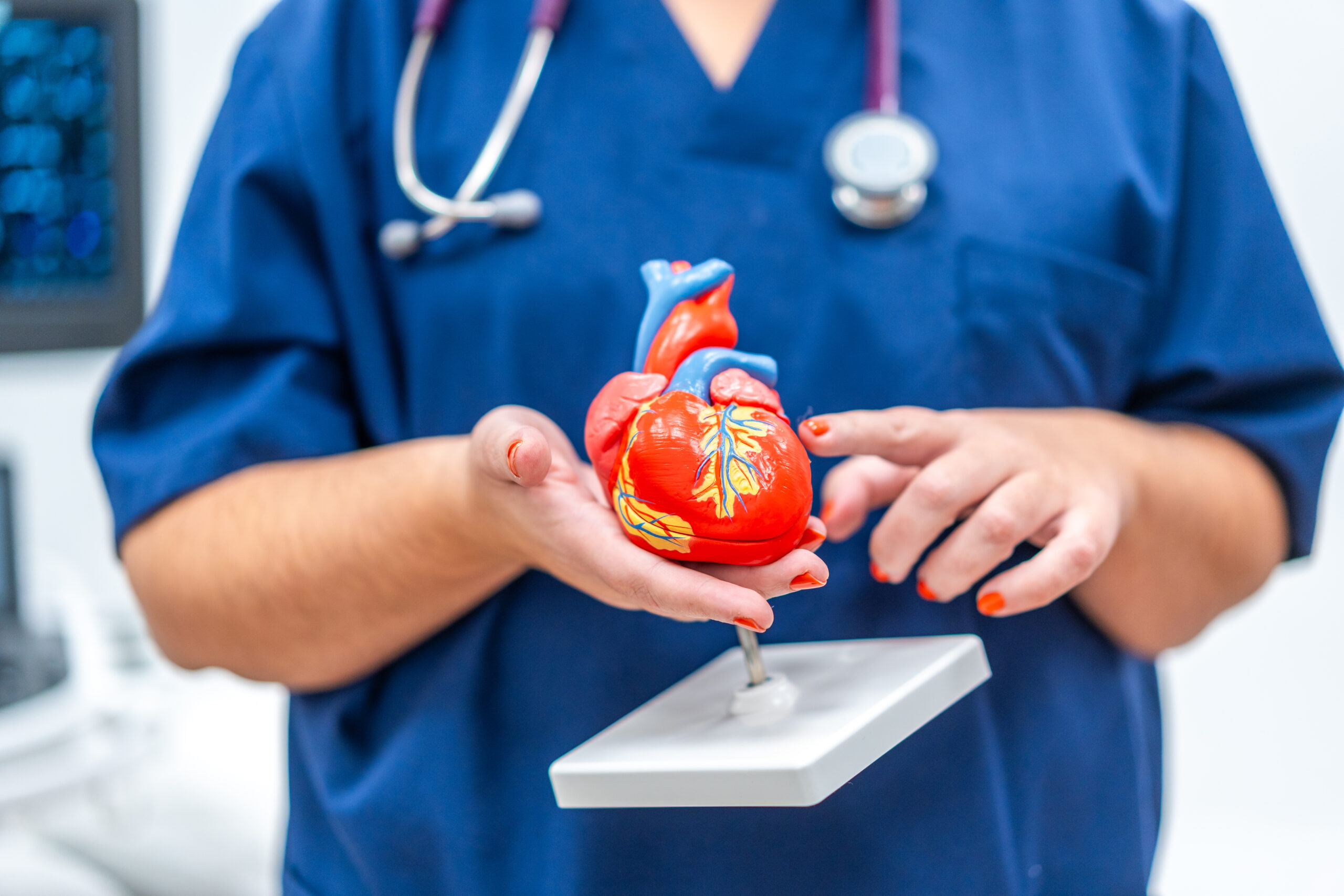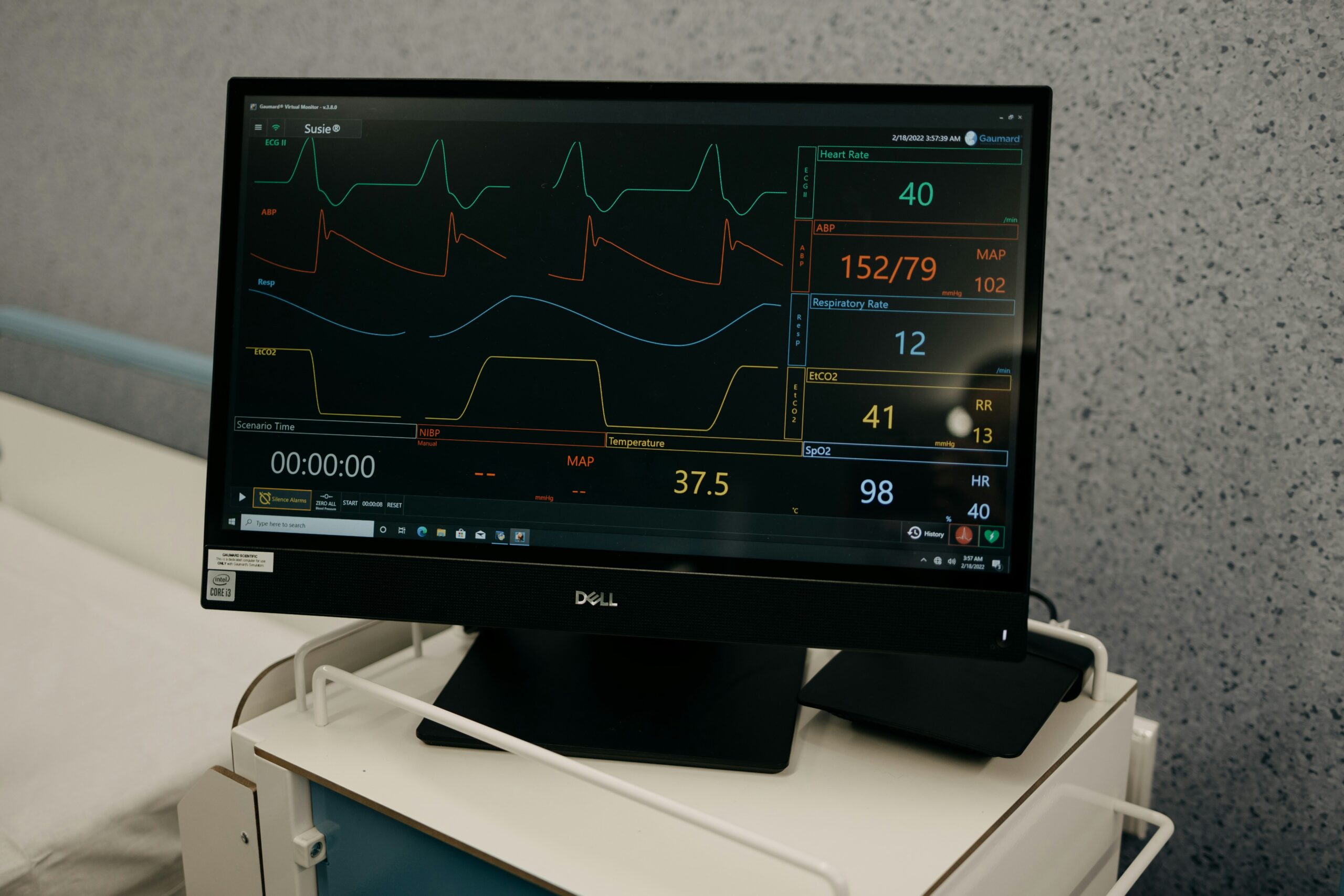Hypertension, or arterial hypertension, is characterized by a steady increase in blood pressure. Arterial hypertension is a risk factor for developing heart, brain and kidney diseases. It can also damage the fundus of the eye and worsen vision. Finally, lead to dangerous complications of the cardiovascular system, such as stroke and myocardial infarction. This condition may require constant medication and, most importantly, a healthy lifestyle.

Systolic blood pressure is the force with which circulating blood acts on the walls of blood vessels. The diastolic pressure is the resistance to the blood flow in the blood vessels. At the moment of contraction of the heart, systolic blood pressure is formed, and diastolic blood pressure is formed during its relaxation. The range of normal values varies depending on age and gender. However, the average normal blood pressure is 110-120 / 70-80 mm Hg.
Numerous studies show that the diagnosis of arterial hypertension starts with a blood pressure of 140/90 mm Hg. Frequent detection of these figures increases the risk of cardiovascular disease. In essence, hypertension is a regular appearance of high blood pressure reading.
It is important to understand that all people are unique in the biological sense, and elevated blood pressure could be a regular reading in any individual case; everyone has different blood pressure readings. There are many factors to consider when deciding if a person has hypertension. Therefore, a doctor should make those decisions. Visiting one is always the first step if you start feeling any signs of high blood pressure.
It is necessary to identify the cause of hypertension to make a final diagnosis. If any disease or a health factor causes high blood pressure, it is called secondary hypertension or symptomatic. In the case of an unknown cause, hypertension is considered primary and is an independent disease.
Hypertension classification
Hypertension, or high blood pressure, can cause severe damage to your body if left unchecked. It is, therefore, essential to understand the different stages of hypertension and how they affect target organs. Let’s look at the various stages of hypertension and which organs are most at risk when your blood pressure remains consistently high.
Stage I Hypertension (140-159/90-99 mm Hg)
Stage I hypertension is characterized by a systolic pressure between 140 and 159 mm Hg and a diastolic pressure between 90 and 99 mm Hg. At this stage, there is usually no organ damage yet. Still, it’s crucial to take measures to prevent further increases in blood pressure.
Stage II Hypertension (160-179/100-109 mm Hg or higher)
Stage II presents asymptomatic lesions of the target organs, with instrumental or laboratory evidence of their involvement: increased volume and mass of the left ventricular, decreased filtration rate in the kidneys, detection of protein in the urine, increased thickness of the carotid artery walls, appearance of atherosclerotic plaques in their lumen. Remember that clinical manifestations of the disease may be absent. It is vital to seek immediate medical attention if you are experiencing symptoms associated with stage II hypertension, such as headaches, dizziness, nausea, blurred vision and chest pain.
Stage III Hypertension (180/120 mm Hg or higher)
Stage III hypertension is considered severe when the systolic reading reaches 180 mm Hg, and the diastolic reading reaches 120 mm Hg or above. At this stage, organs like the heart, brain, kidneys and eyes are severely affected due to prolonged exposure to high blood pressure levels. It can also lead to stroke or heart attack if left untreated for long enough periods. Suppose you have been diagnosed with stage III hypertension. You must follow your doctor’s instructions closely to reduce the risk of other health complications.
There is an isolated form of arterial hypertension in which only the systolic blood pressure is elevated, and the diastolic blood pressure is normal.
Causes of developing high blood pressure
High blood pressure is something that many people can be affected by and is a severe health concern. The cause of developing high blood pressure varies greatly, ranging from genetics to lifestyle choices. Genetics can play a role in how our bodies respond to blood pressure issues, as well as age, gender, and family history. Lifestyle choices like diet, lack of exercise, smoking, and alcohol consumption also play an essential role in blood pressure levels. It can be challenging to pinpoint the exact cause or causes behind blood pressure problems, but taking steps towards maintaining a healthy lifestyle is critical to keep blood pressure in the normal range.
List of the most common causes high blood pressure
- Age – the incidence of arterial hypertension increases with age
- Stress
- Overweight and obesity
- Hereditary predisposition
- Excessive salt intake (>5 g/day)
- Frequent alcohol consumption, smoking
- Sedentary lifestyle
- Taking certain medications: oral contraceptives, non-steroidal anti-inflammatory drugs, corticosteroids, drugs containing erythropoietin, cyclosporine, illegal drugs.
Also, causes of high blood pressure are pre-existing medical conditions in a person, such as:
- Heart and aortic malformations;
- Diseases of the urinary system – renal artery stenosis, diabetic nephropathy, pyelonephritis, glomerulonephritis, and polycystic kidney disease;
- Diseases of the endocrine system – hyperfunction of the thyroid gland, adrenal neoplasms (pheochromocytoma), pituitary gland masses, Icenko-Cushing’s disease or syndrome;
- Obstructive sleep apnea syndrome (sleep apnea episodes often seen in people who suffer from snoring).
Symptoms of hypertension and high blood pressure
Unfortunately, an increase in blood pressure can go unnoticed by a person and not cause any manifestations, which carries a great danger, especially if the body has adapted to these BP numbers. Therefore it is essential to measure blood pressure regularly, especially for people over 40 years old. If there is a family history of hypertension, it is best to start monitoring blood pressure even earlier.
List of most common symptoms of high blood pressure
- headache, characterized by throbbing pain in the back of the head;
- nasal bleeding in the absence of trauma;
- bleeding under the mucous membrane of the eye;
- pain in the heart area due to cardiac overload;
- abnormal heart rhythm due to increased blood pressure, such as atrial fibrillation;
- loss of vision, flickering of flickers in front of the eyes;
- ringing in the ears.
Hypertensive crisis
It is important to know that a life- and health-threatening condition occurs when the blood pressure surges above 180/120 mmHg, accompanied by a pronounced deterioration of well-being. It is called a hypertensive crisis. The hypertensive crisis manifests in weakness, nausea, vomiting, pain behind the chest, anxiety and fear of death, and sometimes a violation of consciousness. This condition requires immediate medical attention, hospitalization and further examination, and prescription or adjustment of treatment.
Implications from high blood pressure
Unfortunately, uncontrolled hypertension and the absence or improper treatment of hypertension lead to the disruption of the target organs and the body as a whole. A stable increase in BP significantly increases the risk of cardiovascular diseases, including life-threatening ones, and other organs and systems disorders. There are many risk factors associated with hypertension.
List of common implications of hypertension
- hypertensive crisis;
- cerebral stroke;
- myocardial infarction / heart attack;
- chronic kidney disease and kidney failure;
- chronic coronary heart disease with angina (pain behind the sternum);
- chronic cerebral circulatory disorder;
- chronic heart failure;
- Heart rhythm disorders (often atrial fibrillation);
- chronic renal insufficiency;
- Atherosclerotic vascular lesions of the lower extremities.
Personal control of blood pressure readings
Keeping blood pressure under control is essential for overall health and well-being. Regulating blood pressure can be daunting, but it is achievable with the right tools and knowledge. Having an ideal blood pressure that stays constant is an unrealistic goal. However, stable average readings reduce one’s risk of cardiovascular diseases and may also improve sleep quality and energy levels. Try getting yourself a blood pressure monitor to control blood pressure readings better – they are now electronically powered and more accessible than ever before.

There are two main types of blood pressure monitors; cuffless and with blood pressure cuff:
- A blood pressure cuff is a traditional, most common type of BP monitor. One should place a cuff on the upper arm to initiate a measurement and press a start button.
- A cuffless monitor can be much more compact and convenient to use, like NovaCardio, produced by our company. To use it, place your fingers on the device for a 30-seconds measurement and get readings in a mobile app. This solution gives much more insight into the state of heart health with many more parameters recorded. Therefore, it is a good option for those looking for a better overall choice.
It is better to take multiple measurements over several weeks to obtain an average, as readings can vary daily. Keeping track of one’s blood pressure and being aware of fluctuations can make all the difference in heading towards healthier blood pressure readings!
8 recommendations for proper blood pressure measurement
- If you have high blood pressure or are at risk for developing it, consider checking your blood pressure more frequently; best to do it daily.
- When checking your blood pressure, sit comfortably and rest your arm on a surface at about heart level.
- Avoid smoking or using tobacco products before checking your blood pressure, as this can temporarily increase your blood pressure readings.
- Avoid consuming caffeinated products before checking your blood pressure, as caffeine can temporarily increase your readings.
- Make sure the cuff size is appropriate for your arm size. A too-small cuff can give falsely high readings, while a too-large cuff can give falsely low readings.
- Take multiple readings at different times of day and compare them to get an accurate picture of your blood pressure levels. Blood pressure can vary throughout the day depending on activity level, stress, and time of day.
- Have your blood pressure measured in the morning for a reference reading, half an hour / an hour after you wake up and before breakfast.
- Keep track of your blood pressure readings over time to see if any trends or patterns are emerging. This information can help manage your blood pressure and overall health.
Finally, remember it is crucial to have your blood pressure checked by a doctor. Please choose a suitable interval for your situation; once a week, a month, or half a year and plan the visits with a doctor to show your collected blood pressure reading and have him check you.
Manage high blood pressure: hypertension
High blood pressure (hypertension) is a common cardiovascular condition that can cause severe problems if not appropriately managed. It is essential to be aware of the risk factors associated with hypertension and take steps to reduce your risk as much as possible. Managing hypertension and high blood pressure can be a difficult task. For many, it involves lifestyle changes such as changing your diet, exercising more, managing stress levels and getting enough sleep. But with the proper knowledge and tools, you can take control of your health and reduce your risk for cardiovascular disease. Let’s consider what steps you can take to get it under control.

Lifestyle Changes
Making lifestyle changes is one of the most important things you can do to manage your hypertension. It includes eating a healthy diet low in sodium, getting regular physical activity, not smoking, limiting alcohol intake, and reducing stress. Eating a balanced diet with plenty of fruits and vegetables will help to keep your blood pressure at the right level.
Healthy Diet
Eating healthy is one way to manage hypertension. A healthy diet should include plenty of fruits, vegetables, whole grains, lean proteins, and low-fat dairy products. Eating foods that are rich in fiber can help lower cholesterol levels and regulate blood sugar levels. Avoiding processed foods high in sodium is also vital because sodium can cause water retention, leading to high blood pressure. Also, it will help you maintain a healthy weight which can further reduce your risk of developing hypertension.
Exercise Regularly
Regular physical activity is paramount for managing hypertension. Research shows that regular exercise helps lower blood pressure by improving circulation and increasing heart rate variability (HRV). Studies have demonstrated that moderate-intensity activities like walking or jogging at least 30 minutes a day can help reduce hypertension levels significantly over time. Additionally, resistance training has been found to improve HRV even further when combined with aerobic activity like running or cycling.
Stress Management
Managing stress is an essential factor in controlling hypertension. Stress hormones such as cortisol can constrict arteries leading to higher blood pressure levels if left unchecked. Reducing stress through activities like meditation or yoga can help relax the body’s systems allowing for better control of the heart rate and more efficient circulation throughout the body. Additionally, studies have found that social support from family members or friends improves outcomes for those suffering from hypertension and other chronic illnesses like diabetes or asthma. Further, getting plenty of sleep each night (at least 8 hours) will help ensure that your body has time to rest and repair itself.
Reduce blood pressure: treating high blood pressure
In many cases, treatment to reduce blood pressure is necessary. Especially when the blood pressure readings are constantly high. However, it is crucial to understand that, in many cases, high blood pressure is an outcome of an underlying cause. Therefore, reducing blood pressure with medications does not always affect the root cause. There needs to be a balance to lower blood pressure to stop it from affecting other organs and finding and addressing the cause of the condition for a complete approach. Most importantly, consider implementing the before-discussed techniques to manage high blood pressure, with or without medication. In many cases, it will allow a person to control blood pressure without medication, especially if the condition is addressed early.
When prescribing treatment for arterial hypertension, the doctor assesses the cardiovascular risks of the individual, which increase with age, as well as the presence of bad habits and excess weight. The doctor also compares the patient’s age, how often and under what conditions arterial hypertension occurs.
In the case of regular high blood pressure readings above 140/90 mmHg and unsuccessful non-medication treatment for several months, the doctor will prescribe the necessary medications. In no circumstances should you change the dosage, cancel or change the medication yourself without consulting with your doctor!


